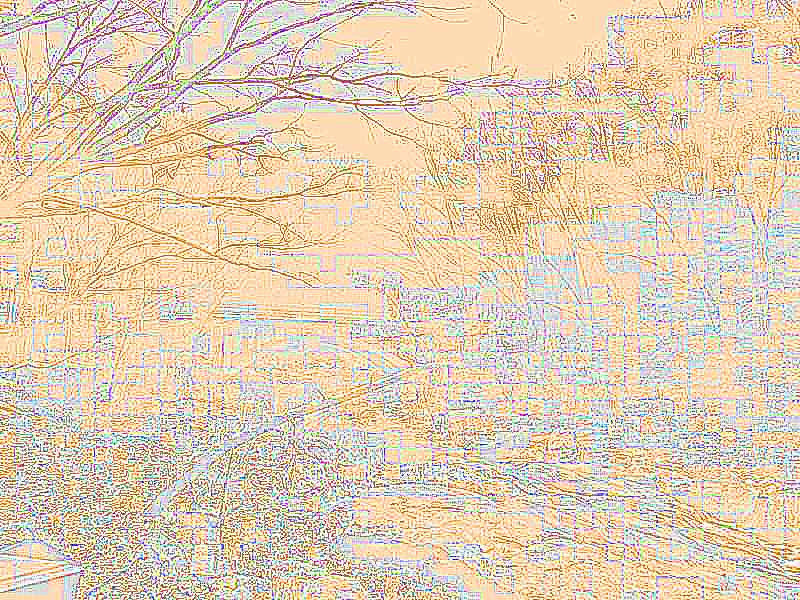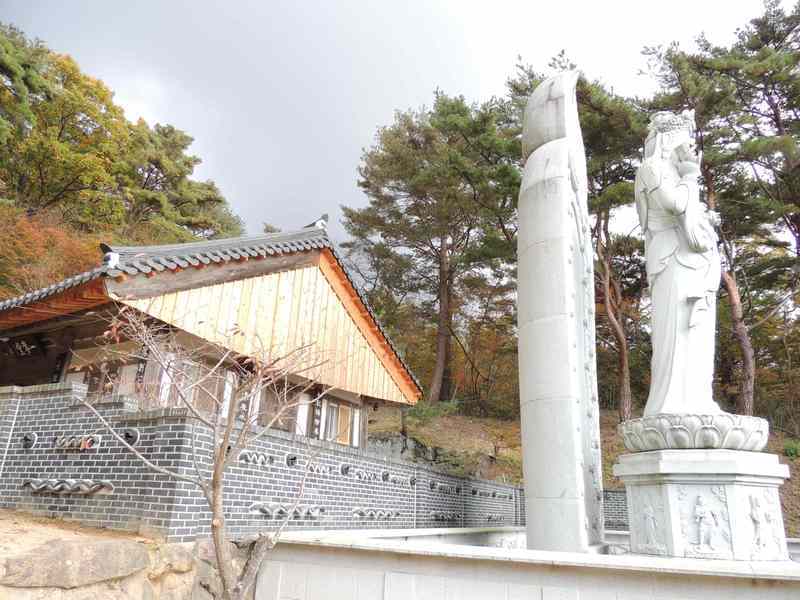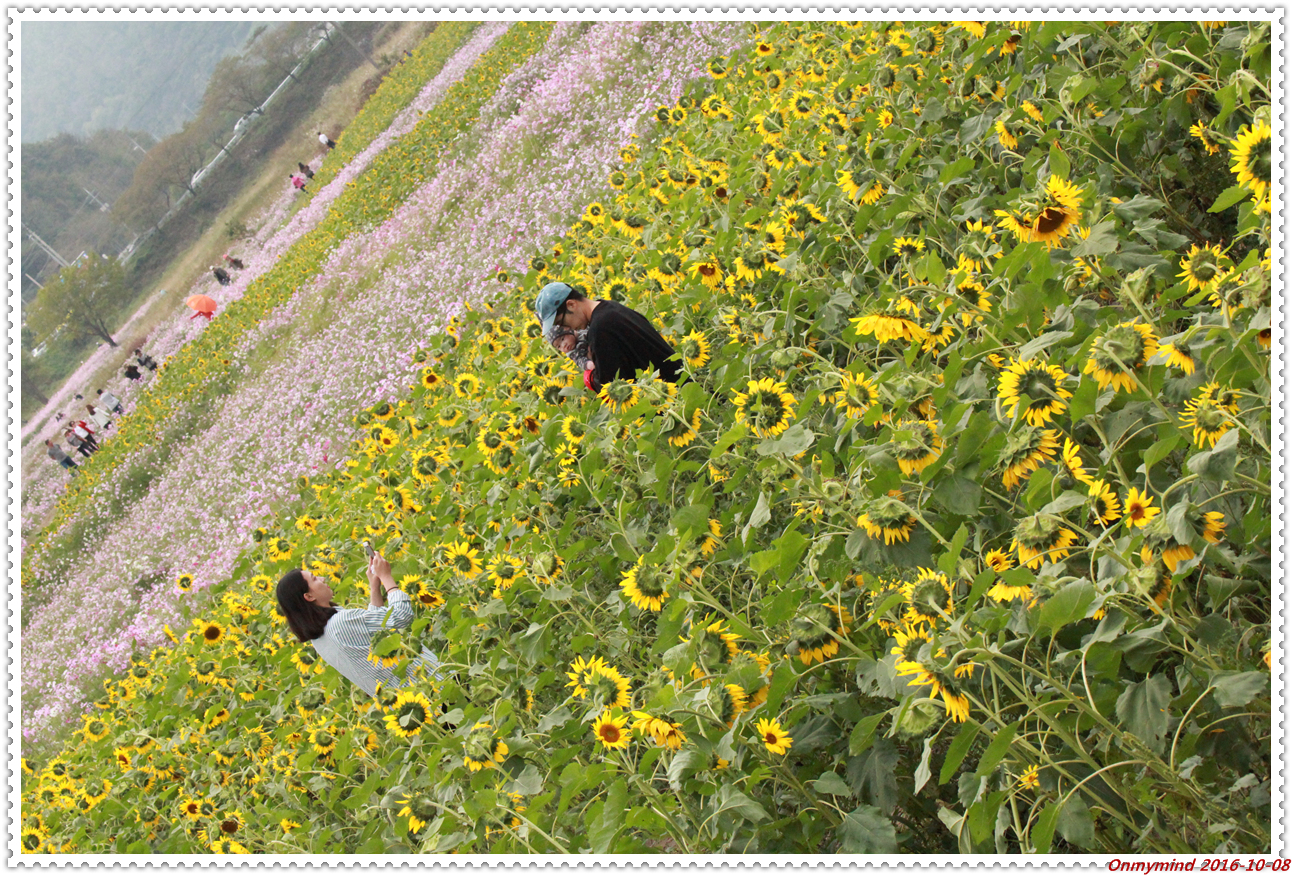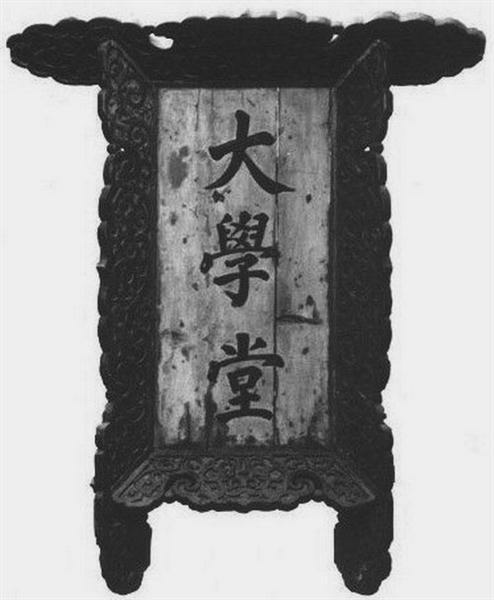『집고금불도논형』
K1066
T2104
집고금불도논형 제4권/전체4권
● 한글대장경 해당부분 열람I
● 한글대장경 해당부분 열람II
○ 통합대장경 사이트 안내
○ 해제[있는경우]
● TTS 음성듣기 안내
※ 이하 부분은 위 대장경 부분에 대해
참조자료를 붙여 자유롭게 연구하는 내용을 적는 공간입니다.
대장경 열람은 위 부분을 참조해주십시오.
● 자료출처 불교학술원 기금 후원안내페이지
『집고금불도논형』
♣1066-004♧
집고금불도논형 제4권/전체4권
♥아래는 현재 작성 및 정리 중인 미완성 상태의 글입니다♥
[페이지 내용 업데이트 관련 안내]
❋본문
◎[개별논의]
○ [pt op tr]
[#M_▶더보기|◀접기|

○ 2019_1105_113536_nik_AB7 순천 조계산 선암사

○ 2019_1106_102328_can_AB7 화순 영구산 운주사

○ 2019_1106_115215_can_AB7 화순 영구산 운주사

○ 2019_1106_124801_can_bw1_s12 화순 영구산 운주사

○ 2019_1105_145557_can_BW25 순천 조계산 송광사

○ 2019_1201_164143_nik_ar21_s12 원주 구룡사

○ 2020_0430_123244_can_ct27 종로구 창의문로 성불사

○ 2020_0904_084822_nik_bw5 여주 봉미산 신륵사

○ 2020_0904_133510_can_ct18 원주 구룡사

○ 2020_0905_111111_can_bw24 오대산 월정사

○ 2020_0905_165454_nik_ct18 오대산 적멸보궁

○ 2020_1017_150101_nik_ct19_s12 삼각산 화계사

○ 2020_1017_172354_can_AR35_s12 삼각산 화계사

○ 2019_1104_115034_can_bw0_s12 구례 화엄사 구층암

○ 2019_1104_134305_nik_ct29_s12 구례 화엄사 연기암

○ 2021_0216_160729_can_CT33강화도_전등사

○ 2021_1112_152206_can_Ab31_s12setec_서울국제불교박람회

○ 2021_1112_154805_nik_ar47setec_서울국제불교박람회

○ 2021_1003_095231_can_ar45_s12_pc밀양_재악산_표충사
● [pt op tr] fr
_M#]

○ 2018_1023_161912_can_AB4_s12 예산 덕숭산 수덕사
❋❋본문 ♥ ◎[개별논의]
★%★
『집고금불도논형』
♣1066-004♧
![]()
◎◎[개별논의] ♥ ❋본문
★1★
◆vrrf1587
| ◈Lab value 불기2568/12/02 |
|
○ [pt op tr] 예술작품 사진 공양, 나무불, 나무법, 나무승 ivan-aivazovsky-chains-of-the-caucasus-mountains-1869
♥단상♥ |
|
문서정보 ori https://buddhism0077.blogspot.com/2024/12/2568-12-02-k1066-004.html#1587 sfed--집고금불도논형_K1066_T2104.txt ☞집고금불도논형 제4권/전체4권 sfd8--불교단상_2568_12.txt ☞◆vrrf1587 불기2568-12-02 θθ |
■ 선물 퀴즈
방문자선물 안내페이지
다음에 해당하는 단어를
본 페이지
에 댓글로 적어주시면 됩니다.
(1) 2종 보살신의 하나. 법성으로 난 몸이란 뜻. 이미 진여를 증득하여 3계(界)에서 생사 유전하던 육신을 버리고, 불생 불멸하는 부사의 변역신(不思議變易身)을 받은 보살. 초지(初地) 이상 보살. 또는 8지(地) 이상 보살이란 말도 있음. (2) ⇒<유사어>오종법신<참조어>오종법신(五種法身)
답 후보
● 법성생신(法性生身)
법아견(法我見)
법애(法愛)
법유아무종(法有我無宗)
법장부(法藏部)
법화종(法華宗)
변계(邊界)
ॐ मणि पद्मे हूँ
○ [pt op tr]
[#M_▶더보기|◀접기|
■ 음악
Michel Sardou - Parce Que C'etait Lui, Parce Que C'etait Moi
Renaud - Nos Vieux
Georges Brassens - La Mauvaise Herbe
Louis Chedid - Mon enfant intérieur
Jacques Dutronc - Les Gars De La Narine
Edith Piaf - Monsieur Lenoble (Inedit)
Enrico Macias - Ne Doute Plus De Moi
■ 시사, 퀴즈, 유머
뉴스
퀴즈
퀴즈2
유머
■ 한자 파자 넌센스 퀴즈
025▲ 少殳水氵氺 ■ 소수수수수 25 ( 적을 소/ 젊을 소 )( 몽둥이 수 )( 물 수 ) (삼수변 수) ( 물 수 )
012▲ 宀凡士巳三 ■ 면범사사삼 12ㅡ 집에서 평범한 선비가 머물면 뱀과 같은 지혜가 3개나 생겨난다. ( 집 면 [사방이 지붕으로 덮어 씌워져 있는 집] 갓머리( 부수( 部首)의 하나) )( 무릇 범 )( 선비 사 )( 뱀 사 )( 석 삼 ) 재춘법한자
【 】 ⇄✙➠
일본어글자-발음
중국어글자-발음
■ 영어단어 넌센스퀴즈- 예문 자신상황에 맞게 바꿔 짧은글짓기
■ 번역퀴즈
번역
번역연습(기계적 번역내용 오류수정 연습)
■ 영-중-일-범-팔-불어 관련-퀴즈
[wiki-bud] Jakushitsu Genkō
[san-chn] ghrāṇa-saṃsparśa 鼻觸
[san-eng] kāmarūpeṇa $ 범어 in the form of lust
[pali-chn] visadakiriyā 明淨
[pal-eng] abhidhamma $ 팔리어 m.the analytic doctrine of the Buddhist Canon.
[Eng-Ch-Eng] 一遍 Ippen, (1239-1289), Japanese monk, considered to be the founder of the Ji sect 時宗 of Pure Land 淨土 Buddhism, which has its main temple Yugyo^ji 游行寺 in Fujisawa. Ippen was born in present-day Ehime prefecture and studied at an early age with a disciple of Ho^nen 法然. He left the priesthood once to return to the secular world, but later reversed this decision. After a pilgrimage to Zenko^ji 善光寺 in Nagano prefecture, he went to a secluded temple in Ehime, where he carried out rigorous religious practice, and eventually had an experience of intimate unity with Amita^bha Buddha 阿彌陀佛. He became convinced through this experience that no matter what one's degree of religious preparation, he or she could be reborn in the Pure Land by virtue of even one recitation of Amita^bha's name. He subsequently wandered throughout the country, handing out slips of paper to people with basic instructions for his style of Pure Land practice. He is said to have converted thousands. Approaching death at the age of 51, he burned all of his own writings, and thus none of his works survive.
[Muller-jpn-Eng] 盧倶多婆拖部 ルグタバタブ (school) Lokottara-vāda
[Glossary_of_Buddhism-Eng] EIGHT SAMADHIS OF EMANCIPATION☞
Syn: Eight Liberations; Eightfold Liberation; Vimoksa.
“The eight types of meditation for removing various attachments
to forms and desires: (1) removing passions by meditation on the
impurity of one’s body, (2) strengthening emancipation from passions
by meditating on the impurity of external objects, (3) removing passions by meditating on pure aspects of external objects, (4) removing
attachment to material objects by meditating on boundless consciousness, (5) removing attachment to void by meditating on the boundless
consciousness, (6) removing attachment to consciousness by meditating on non-existence, (7) removing attachment to non-existence by
meditating on the stage of neither thought nor non-thought, and
(8) extinguishing all thoughts and perceptions and dwelling in the
stage of total extinction.”
Inag: 397 #0697
[fra-eng] l'égypte $ 불어 the egypt
[chn_eng_soothil] 三倒 idem 三顚倒.
[vajracchedikā prajñāpāramitā sūtraṁ] ▼●[羅什] 所有一切衆生之類, 若卵生、若胎生、若濕生、若化生,
若有色、若無色、若有想、若無想、若非有想・非無想, 我皆令入無餘涅槃,
而滅度之.
이른바 세상에 있는 온갖 중생으로서 난생(卵生)、태생(胎生)、습생(濕生)、
화생(化生)과 유색(有色)、무색(無色)、유상(有想)、무상(無想)、비유상(非有
想)、비무상(非無想)의 온갖 중생을 내가 모두 제도하여 무여열반(無餘涅槃)
에 들도록 하리라 하라.
[玄奘] 所有諸有情, 有情攝所攝,
若卵生、若胎生、若濕生、若化生、若有色、若無色、若有想、若無想、若非有想非
無想, 乃至有情界施設所施設, 如是一切,
我當皆令於無餘依妙涅槃界而般涅槃;
[義淨] 所有一切眾生之類,
若卵生、胎生、濕生、化生、若有色、無色、有想、無想、非有想非無想,
盡諸世界所有眾生, 如是一切, 我皆令入無餘涅槃而滅度之;
03-02 यावन्तः सुभूते सत्त्वाः सत्त्वधातौ सत्त्वसंग्रहेण संगृहीता अण्डजा वा जरायुजा वा संस्वेदजा वा औपपादुका वा रूपिणो वा अरूपिणो वा संज्ञिनो वा असंज्ञिनो वा नैवसंज्ञिनो नासंज्ञिनो वा, यावान् कश्चित्सत्त्वधातुः प्रज्ञप्यमानः प्रज्ञप्यते, ते च मया सर्वेऽनुपधिशेषे निर्वाणधातौ परिनिर्वापयितव्याः।
yāvantaḥ subhūte sattvāḥ sattvadhātau sattvasaṁgraheṇa saṁgṛhītā aṇḍajā
vā jarāyujā vā saṁsvedajā vā aupapādukā vā rūpiṇo vā arūpiṇo vā saṁjñino
vā asaṁjñino vā naivasaṁjñino nāsaṁjñino vā | yāvan
kaścitsattvadhātuḥprajñapyamānaḥ prajñapyate | te ca mayā
sarve'nupadhiśeṣe nirvāṇadhātau parinirvāpayitavyāḥ |
수보리여! 알에서 태어난 것들이거나 태로 태어난 것들이거나 습기에서 태어난
것들이거나 化現하여 태어난 것들이거나, 형상이 있는 것들이거나 형상이 없는
것들이거나 인식작용이 있는 것들이거나 인식작용이 없는 것들이거나 결코 인식작용이
있는 것이 아닌 것들이거나 인식작용이 없는 것이 아닌 것들이거나, 중생들이 중생들의
세계에서 중생이라는 무리로 무리지어 있는 만큼, (또한) 알려지고 있는 어떤 중생들의
세계가 알려지는 만큼, (바로 그만큼) 모든 그들은 나에 의해 아무것도 남아있지 않은
열반의 세계에서 완전한 열반에 들게 될 것이다( 라고).
▼▷[yāvantaḥ] ① yāvantaḥ(nj.→ƾ.nom.pl.) → [(어떤) 만큼인]
「어떤 만큼인 중생들이 ~ 무리지어 있다(+면)」 + 「그들은 해탈~」 → 「중생들이
무리지어 있다면 바로 그만큼 그들은 해탈~」 → 「중생들이 무리지어 있는 만큼
바로 그만큼 그들은 해탈~」
② yāvat(nj. as great, as much, as long; as many as, so much as: ƺ. as far as, up to, till)
▼[subhūte] ① subhūte(ƾ.voc.) → [수보리여!]
② subhūti(ƾ. N. of …; wellbeing, wellfare)
▼[sattvāḥ] ① sattvāḥ(ƾ.nom.pl.) → [존재들은 → 중생들은]
sat(존재)tva(상태) → 존재하는 상태를 지닌 것 → 衆生 : ① 존재하는 상태, 즉
살아있는 상태를 지닌 것. 곧 ‘살아있는 것’ ② 존재하고 있는 상태, 즉 해탈하여
存在라는 상태를 벗어나지 못한 상태에 있는 것. 곧 ‘해탈하지 못한 것[衆生]’
② sattva(ƿƾ. being, existence, entity; nature character; consciousness, mind, sense)
▼[sattvadhātau] ① sattva+dhātau(ƾ.loc.) → [존재들의 세계에서 → 중생의 세계에서]
② dhātu(ƾ. a constituent or essential part, an ingredient; an element; a part, portion)
▼[sattvasaṁgraheṇa] ① sattva+saṁgraheṇa(ƾ.ins.) → [존재들의 무리로 → 중생의
무리들로 → 중생이라는 무리들로]
② saṁgraha(ƾ. seizing, grasping, taking; clenching the fist; reception; guarding, protection)
▼[saṁgṛhītā] ① saṁgṛhītāḥ(njp.→ƾ.nom.pl.) → [무리지어 있다]
② saṁgṛhīta(nj. gathered, collected; grasped, seized; restrained, governed)
▼[aṇḍajā] ① aṇḍajāḥ(nj.→ƾ.nom.pl.) → [알에서 태어나는]
② aṇḍaja(nj. born from an egg) < aṇḍa(ƾƿ. the testicles; the scrotum; an egg) + ja(nj.
born from) < jan(4.Ʋ. to be born)
▼[vā] ① vā(ƺ.) → [또는]
② vā(ƺ. or, either, or else)
▼[jarāyujā] ① jarāyujāḥ(nj.→ƾ.nom.pl.) → [태로 태어나는]
② jarāyuja(nj. born from the womb, viviparous) < jarāyu(ƿ. the slough or castoff skin of
a serpent; the outer skin of the embryo; the uterus, womb)
▼[vā] ① vā(ƺ.) → [또는]
▼[saṁsvedajā] ① saṁsvedajāḥ(nj.→ƾ.nom.pl.) → [습기에서 태어나는]
② saṁsvedaja(nj. born from the moisture) < saṁ(ƺ. with) + sveda(ƾ. sweat,
perspiration; heat, warmth; vapour) < * + a < svid(4.ǁ. to sweat, perspire)
▼[vā] ① vā(ƺ.) → [또는]
▼[aupapādukā] ① aupapādukāḥ(nj.→ƾ.nom.pl.) → [스스로 태어나는 → 化現하여
태어나는]
② aupapāduka(nj. selfproduced) < upapāduka(nj. selfproduced: ƾ. a superhuman being,
God) < upapad(4.Ʋ. to reach, come to, approach; to be got or obtained; to take place,
occur) < upa(ƺ. toward, near to) + pad(10.Ʋ. to go or move: 4.Ʋ. to go to)
▼[vā] ① vā(ƺ.) → [또는]
▼[rūpiṇo] ① rūpiṇaḥ(nj.→ƾ.nom.pl.) → [형상이 있는]
② rūpin(nj. appearing like; embodied, incarnate; beautiful) < * + in < rūpa(ƿ. any
outward appearance or phenomenon or colour; form, shape, figure)
▼[vā] ① vā(ƺ.) → [또는]
▼[arūpiṇo] ① arūpiṇaḥ(nj.→ƾ.nom.pl.) → [형상이 없는]
② arūpin(nj. shapeless, formless)
▼[vā] ① vā(ƺ.) → [또는]
▼[saṁjñino] ① saṁjñinaḥ(nj.→ƾ.nom.pl.) → [인식작용이 있는]
② saṁjñin(nj. named; that which receives a name) < * + in(possessive) < saṁjñā(Ʒ.
consciousness; knowledge, understanding; intellect, mind)
▼[vā] ① vā(ƺ.) → [또는]
▼[asaṁjñino] ① asaṁjñinaḥ(nj.→ƾ.nom.pl.) → [인식작용이 없는]
② asaṁjñin(nj.) < * + in(possessive) < asaṁjña(nj. insensible) | asaṁjñā(Ʒ. disunion,
disagreement, discord)
▼[vā] ① vā(ƺ.) → [또는]
▼[naivasaṁjñino] ① na+eva+saṁjñinaḥ(nj.→ƾ.nom.pl.) → [결코 인식작용이 있는 것이
아닌]
나열된 항목의 하나로서 'sattvāḥ'의 형용사가 되기 위해서는 복합어야 되어야 한다.
② eva(ƺ. indeed, truly, really; just so, exactly so truly)
▼[nāsaṁjñino] ① na+asaṁjñinaḥ(nj.→ƾ.nom.pl.) → [인식작용이 없는 것이 아닌]
결코 인식작용이 있는 것도 아니요 인식작용이 없는 것도 아닌 것들이거나.
▼[vā] ① vā(ƺ.) → [또는.]
▼▷[yāvan] ① yāvan(nj.→ƾ.nom.) → [(어떤) 만큼인]
「어떤 만큼인 어떠한 세계가 알려지게 된다 (+하더라도)」 + 「그들은 해탈~」 →
「어떠한 세계가 열려지게 된다 하더라도 바로 그만큼 그들은 해탈~」
② yāvat(nj. as much/many as; as great, as large; all, whole)
▼[kaścitsattvadhātuḥprajñapyamānaḥ] ① kaścit(pn.ƾ.nom.) + sattva+dhātuḥ(ƾ.nom.) +
prajñapyamānaḥ(nj.→ƾ.nom.) → [어떤、 중생들의 세계가、 알려지고 있는]
② kimcit(ƺ. to a certain degree, somewhat, a little)
② sattva(ƿƾ. being, existence, entity; nature character; consciousness, mind, sense)
② dhātu(ƾ. a constituent or essential part, an ingredient; an element; a part, portion)
② prajñapyamāna(caus.pres.p.) < prajñā(9.dž. to know, know about)
▼[prajñapyate] ① prajñapyate(caus.pres.Ⅲ.sg.) → [알려지다 → 알려지더라도]
② prajñā(9.dž. to know, know about; to be aware of, find out; to discern, distinguish)
▼▷[te] ① te(pn.ƾ.nom.pl.) → [그들은]
② te(pn.ƾ.nom.pl.|ƿ.nom.acc.du.|Ʒ.nom.acc.du.) < tad(pn. that, he, it, she)
▼[ca] ① ca(ƺ.) → [또한]
② ca(ƺ. and, both, also, moreover)
▼[mayā] ① mayā(pn.Ⅰ.ins.) → [나에 의해]
▼[sarve'nupadhiśeṣe] ① sarve(nj.→ƾ.nom.pl.) + anupadhiśeṣe(nj.→ƾ.loc.) → [모든、
기초가 남아있지 않은 → 모든、 아무것도 남아있지 않은]
② sarva(pn.nj. whole, entire, all, every)
② anupadhiśeṣa(nj.) < an(not) + upadhi(ƾ. fraud, dishonesty; suppression of the truth;
terror, threat; foundation [with the Buddhists]) + śeṣa(nj. remaining)
▼[nirvāṇadhātau] ① nirvāṇa+dhātau(ƾ.loc.) → [불이 꺼진 세계에서 → 열반의 세계에서]
② nirvāṇa(p.p. blown out; lost; dead: ƿ. extinction; vanishing from sight; dissolution, death)
< nirvā(2.ǁ. to blow; to be cooled; to blow out) + na(kṛt) < nis(ƺ. out, away) +
vā(2.ǁ. to blow; to go, move; to strike, hurt)
② dhātu(ƾ. a constituent or essential part, an ingredient; an element; a part, portion)
▼[parinirvāpayitavyāḥ] ① parinirvāpayitavyāḥ(njp.→ƾ.nom.pl.) → [완전히 불이 꺼지도록
되어 질 것이다. → 완전한 열반에 들게 될 것이다.]
‘~ 그들은 나에 의해 완전한 열반에 들것이다.’라는 인식이 일어나도록 해야 한다.
② parinirvāpayitavya(nj.) < pari(ƺ. very, excessively) + nirvā(2.ǁ. to blow; to be cooled;
to blow out) + payi(caus.) + tavya(pot.[→fut.]pass.p.)
출처 봉선사_범어연구소_현진스님_금강경_범어강의
『능단금강반야바라밀다경』(能斷金剛般若波羅密多經) - 범어 텍스트 vajracchedikā prajñāpāramitā sūtraṁ
♣K0116-001♧
♣K0117-001♧
■ 삼매_게송퀴즈
■ 오늘의 게송
[337일째]
피제신력불가설 $ 079▲謎魯陀謎魯陀為 一 ● 契魯陀, ○□□□□,彼,入,念,無
□□□□□□□, 彼諸方便不可說,
入空寂智不可說, 念念相續不可說,
□□□□□□□, 피제방편불가설,
입공적지불가설, 념념상속불가설,
彼諸神力不可說,
저 모든 신통의 힘 말할 수 없고
저 모든 방편들도 말할 수 없고
고요한 지혜에 듦 말할 수 없고
생각생각 계속함을 말할 수 없고
[338째]
무량행문불가설 $ 080■ ■無 諸種了知變 示一勇清成
080▲ 契魯陀契魯陀為 一 ● 摩覩羅, ○□□□□,念,諸,悉,諸
□□□□□□□, 念念恒住不可說,
諸佛剎海不可說, 悉能往詣不可說,
□□□□□□□, 념념항주불가설,
제불찰해불가설, 실능왕예불가설,
無量行門不可說,
한량없는 수행의 문 말할 수 없고
생각생각 머무름을 말할 수 없고
부처님의 세계해도 말할 수 없고
거기마다 나아감을 말할 수 없고
●K0145_T0481.txt★ ∴≪A지인보살경≫_≪K0145≫_≪T0481≫
●K1066_T2104.txt★ ∴≪A집고금불도론형≫_≪K1066≫_≪T2104≫
●K1435_T1637.txt★ ∴≪A집대승상론≫_≪K1435≫_≪T1637≫
■ 암산퀴즈
947* 324
433422 / 726
■ 다라니퀴즈
구족수화길상광명대기명주총지 12 번째는?
불정광취실달다반달라비밀가타미묘장구(佛頂光聚悉怛多般怛羅秘密伽陁微妙章句) 280 번대 10개 다라니는?
부처님 108 명호 13 번째는?
12 청정한 계(戒)를 증장시키며,
사뎨 닐아라참포, 薩帝<丁斯反>昵<泥吉反>訶羅讖蒱<十二>
satya nir-hara ksam bhu,
말법시대의 지장
『대승대집지장십륜경』
♣0057-001♧
280 아싣다나 라 라가 ◐阿悉多那<引>囉<引>囉迦<白光分明二百><八十>◑Asitaㆍanalāruka
281 바라바비사보타 ◐鉢囉婆毘薩普咤<二百八十一>◑prabhāsvata
282 비가싣달다 ◐毘迦悉怛多<二百八十二>◑vikaㆍsit'āta
283 바디리 ◐鉢底哩<二百八十三>◑patre//
284 지바라지바라 ◐什嚩囉什嚩囉<光焰二百八十四>◑jvalaㆍjvala
285 타라타라 ◐陁囉陁囉<二百八十五>◑daraㆍdara
286 빈타라빈타라 ◐頻陁囉頻陁囉<二百八十六>◑vidaraㆍvidara
287 진타진타 ◐嗔陁嗔陁<二百八十七>◑chindaㆍchinda//
288 함후함후 ◐含吽含吽<二百八十八>◑Hūṃ hūṃ
289 바바바 ◐泮泮泮<二百八十九>◑pha pha pha
●아난아,
이 선남자가 이 주문을 지닐 때에는,
가령 주문을 수지하기 전에 금계(禁戒)를 범했을지라도,
주문을 지닌 뒤에는
온갖 파계 죄는 가볍고 무거움을 가리지 않고
일시에 소멸하며,
비록 술을 마시고
오신채(五辛菜) 등 가지가지 부정(不淨)한 음식을 먹고 지냈을지라도,
일체 모든 부처님과 보살과
금강과 하늘과 신선과 귀신(鬼神)들은
그것을 잘못으로 여기지 않는다.
불정광취실달다반달라비밀가타미묘장구(佛頂光聚悉怛多般怛羅秘密伽陁微妙章句) - 『대불정여래밀인수증요의제보살만행수능엄경』
♣K0426-007♧
013
모든 번뇌[垢染]를 여의신 이께 귀의합니다.
南無離一切垢染
『불일백팔명찬』佛一百八名讚
♣1183-001♧
306828
597
법수_암기방안
80 거골[=발목뼈중 가장 윗뼈]
28 새끼 ( LITTELE finger)
12 팔꿉 [elbow]
1 빗장뼈[=쇄골]
13 노뼈 [radius]
79 검지 식지 (~집게)
137 ( the kneecap, / the patella무릎 종지뼈) 종지뼈
■ 오늘의 경전 [이야기, 게송,선시 등]
2568_1202_203917 :
대장경 내 게송
“하나의 안에서 한량없는 것 알고/
한량없는 것 안에서 하나를 아나니/
저것이 서로서로 생기는 줄 환히 알면/
장차 두려울 바 없음을 이루리라”
출전:
한글대장경 K1499_T2016
종경록(宗鏡錄) 송 연수집
宗鏡錄 【宋 延壽集】
출처 불교기록문화유산아카이브 통합대장경
https://kabc.dongguk.edu/m
■요가자세 익히기
옆으로 누운 휴식 자세 [Savasana]

○ 2016_1008_133628_nik

○ 2016_1008_150321_can

○ 2016_1008_150327_can

○ 2016_1008_150348_can

○ 2018_0419_131351_can

○ 2018_0419_135106_can

○ 2018_0419_135505_can

○ 2018_0419_135644_can

○ 2020_0525_175347_can

○ 2020_0525_181756_can

○ 2020_0606_140038_can

○ 2020_0606_140151_can

○ 2020_0606_181624_can

○ 2020_0606_184744_can

○ 2020_0606_191033_can

○ 2022_0411_152826_can_exc장안벚꽃길

○ 2022_0411_160043_nik_exc장안벚꽃길

○ 2023_0522_144333_can_exc_s12서울장미축제
● [pt op tr] fr
_M#]

○ 2022_1109_135436_can_exc인천대공원_인천수목원
™善現智福 키워드 연결 페이지
https://buddhism0077.blogspot.com/2020/06/keyword.html
○ [pt op tr]
● 집고금불도논형_K1066_T2104 [문서정보]- 일일단상키워드
[#M_▶더보기|◀접기|
[관련키워드]
집고금불도논형 제4권/전체4권
■ 본 페이지 ID 정보
불기2568-12-02_집고금불도논형-K1066-004
https://buddhism0077.blogspot.com/2024/12/2568-12-02-k1066-004.html
sfed--집고금불도논형_K1066_T2104.txt ☞집고금불도논형 제4권/전체4권
sfd8--불교단상_2568_12.txt ☞◆vrrf1587
불기2568-12-02
https://blog.naver.com/thebest007/223680278223
https://buddhism007.tistory.com/463194
htmback--불기2568-12-02_집고금불도논형_K1066_T2104-tis.htm
● [pt op tr] fr
_M#]




댓글 없음:
댓글 쓰기
What do you think is the most important?
Do you know why this is the most important?